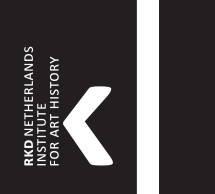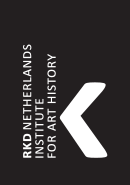2.2 Artists Active in Wrocław
Gerson understandably did not mention artists who worked in Breslau (Wrocław), in the historical region of Silesia, in his ‘Danzig and Poland’ chapter, instead including them in his ‘Austria and Silesia’ as part of his treatment of the German empire.1 As the only ‘Dutch’ (possibly born in Utrecht) artist active in Silesia, Gerson named Johann Gottlieb Glauber (1656-1703), a younger brother of Johannes Glauber, who ended up in Breslau via Prague after his peregrinations through Southern and Central Europe.2
We know of the Antwerp painter Anton van Opstal (1590-) [1] that he was cabinet painter to Charles of Austria, Bishop of Breslau (1590-1624), who attempted to return Silesia to Catholicism.3 The trompe-l’oeil painter Cornelis Norbertus Gijsbrechts (1625/9-in or after 1675) worked in Denmark and Germany for a long time and was probably in Breslau in 1675. Two works of his dated 1675 may have originated there [2-3].4 Both Flemish artist are not mentioned in Gerson’s text.

1
after Anthony van Dyck
Portrait of Anton van Opstal (1590-?), after 1626
Munich, Alte Pinakothek, inv./cat.nr. 7519

2
Cornelis Norbertus Gijsbrechts
Trompe l'oeil with kit, painter's implements, letters and miniature self-portrait, dated 1675
Warsaw, Zamek Królewski w Warszawie, inv./cat.nr. ZKW/679

3
Cornelis Norbertus Gijsbrechts
Trompe l'oeil, a quodlibet with letters and a roll of blue paper, dated 1675
Cologne, Wallraf-Richartz-Museum & Fondation Corboud, inv./cat.nr. WRM 2828
The Silesian painter Michael Willmann (1630-1706) [4], who was born in Königsberg (Kaliningrad, now in the Russian Federation, historically East Prussia) and died in Leubus (Lubiąż), visited The Netherlands around 1650. His paintings are permeated with Dutch and Flemish influences, and the artist receives ample attention in Gerson’s chapter on Austria and Silesia.5 Gerson also saw Dutch resonances in a few works by the Breslau portraitist Georg Scholtz II (1622-1677), as well as with the still-life painter Philipp Sauerland (1677-1762).6

4
Michael Willmann
Self-portrait, dated 1682
Wrocław, Muzeum Narodowe we Wroclawiu
Notes
1 Gerson 1942/1983, pp. 292-294.
2 Gerson 1942/1983, pp. 294.
3 He may have come in contact with Bartholomeus Strobel there.
4 In addition to a self-portrait, the painting in Warsaw contains a letter with Gijsbrecht’s Breslau address (G. Bissell in Saur 1992-, vol. 66 [2010], p. 458.
5 Gerson 1942/1983, pp. 292-294.
6 Gerson 1942/1983, p. 294.

